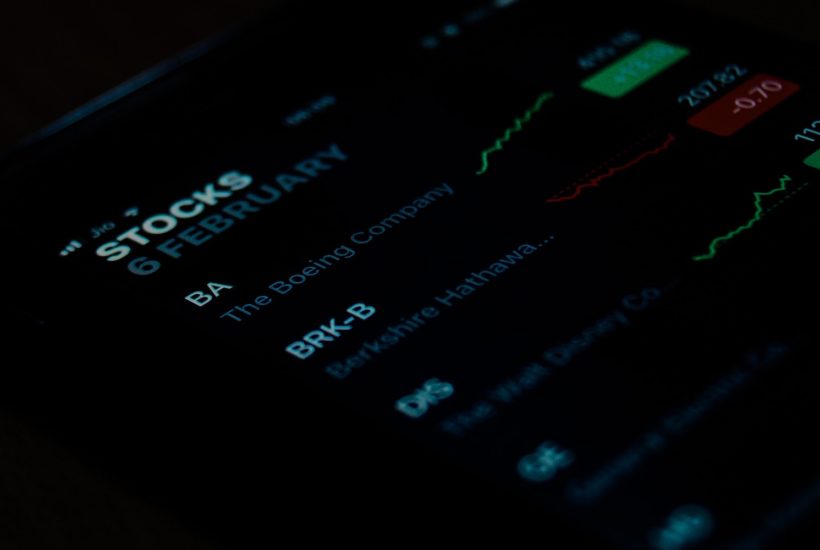Business
The Fed lowers rates to 0% and launches a $700 billion purchase program
The Fed, the ECB, the Bank of Canada, the Bank of England, the Bank of Japan and the Swiss National Bank act in a manner to ensure liquidity. Interest rates were cut by the Federal Reserve to a range of 0-0.25%. The central bank will gobble up $500 billion in the U.S. Treasury bonds and another $200 billion in mortgage-backed assets. According to the Fed, the purchases began on March 16th.

In its second emergency intervention since March 3rd, and following pressure from the U.S. President Donald Trump, the Federal Reserve once again cut interest rates from 1-1.25% to a range of 0-0.25%. These levels have not been seen since the financial crisis of 2008, and represent a cut of one percentage point (100 basis points) as already discounted by the market.
The U.S. central bank justified its decision by explaining that “the coronavirus outbreak has damaged communities and disrupted economic activity in many countries, including the U.S. According to the statement issued after this decision, the Fed is expecting to maintain interest rates at these levels “until it is confident that the economy has resisted the latest events and is on track to achieve its goals, maximum employment and price stability.”
The cut was accompanied by the launch of a new massive quantitative easing program, i.e., asset purchase worth $700 billion to protect the economy from the effects of the coronavirus pandemic.
Get comprehensive up-to-date business news, aggregated from sources all over the world with the Born2Invest mobile app.
Measures to overcome a possible financial crisis
Thus the Central Bank will gobble up $500 billion in the U.S. Treasury bonds and another $200 billion in mortgage-backed assets, emulating the three rounds of quantitative easing (QE) implemented after the scourge of the financial crisis and the subsequent Great Recession that swelled its balance sheet to $4.5 trillion.
Federal Reserve Chairman Jerome Powell and the Federal Open Market Committee (FOMC), whose monetary policy meeting was officially scheduled for March 17th-18th in Washington, also reduced the emergency lending rate in the discount window for banks by 125 basis points to 0.25%, and extended the term of loans to 90 days. In addition, the Fed reduced to zero the reserve requirements for thousands of banks .
In parallel, in a globally coordinated move by central banks, the Fed said the Bank of Canada, Bank of England, Bank of Japan, European Central Bank, Federal Reserve and Swiss National Bank took steps to improve dollar liquidity around the world through existing dollar exchange agreements.
Powell: the virus will pose a “significant challenge” to the U.S.
In a subsequent conference call, Powell acknowledged that the pandemic “will have profound effects on the U.S. citizens” and will pose “a significant challenge” to the economy. He said the measures imposed by the federal, state and local governments will directly affect industries such as transportation and tourism. He also warned that inflation will stop “in its tracks” and that the Fed is “willing to be patient” before returning rates to normal again, once the scourge of the pandemic dissipates.
The watchdog for price stability and full employment, who said he is fine and has not been tested by the COVID-19, made it clear that driving interest rates into negative territory “is not the right policy” in the eyes of Fed officials who continue to favor the use of their “forward guidance,” i.e., their projections into the future, as well as the purchase of assets, such as Treasury bonds and mortgage-backed assets.
When asked about the possibility of extending asset purchases beyond sovereign debt and mortgage-backed assets, referring to the possible absorption of corporate debt or equity assets, the Fed chief said that this option has not been considered and reminded that the Fed does not have the authority to carry out purchases beyond government debt and mortgage assets. Expanding the range of assets the Fed can buy, should be authorized by lawmakers in Congress. The top central bank official said that at this time he does not intend to ask Congress to increase the Fed’s powers to use other tools beyond those currently available to the U.S. central bank.
The weakness in the economy will probably start to be felt in the second quarter
Powell insisted that the U.S. economy has entered the crisis on a “solid” basis, referring to the resilience shown by economic activity in recent months. However, the Fed’s chairman predicted that the weakness in the economy will probably start to be felt in the second quarter and what will happen next “is difficult to predict.”
The FOMC vote to bring the rates up to the first implemented levels at the end of 2008 was not unanimous. Cleveland Fed President Loretta Mester voted against it. She advocated leaving the price of money in a range of 0.5% to 0.75%, which would have represented a reduction of half a percentage point. However, the rest of the nine members of the monetary policy body agreed to lower rates to 0% and 0.25%.
The Fed stressed in its statement that it “is prepared to use its full range of tools to support the flow of credit to households and businesses, and thereby promote their maximum employment and price stability goals. These exceptional measures come on top of the decisions taken by the U.S. central bank in the last two weeks. First, the central bank instigated a 50-basis point emergency rate cut and expanded the supply of credit during the money market with interventions of up to $1.5 trillion.
“The Fed has delivered on its promise to use all available tools to support expansion during this time of significant economic disruption and market volatility. This should send a powerful signal to the markets that the Federal Reserve will act boldly to provide credit to the real economy,” Citi economist Andrew Hollenhorst said in a report.
__
(Featured image by Ishant Mishra via Unsplash)
DISCLAIMER: This article was written by a third party contributor and does not reflect the opinion of Born2Invest, its management, staff or its associates. Please review our disclaimer for more information.
This article may include forward-looking statements. These forward-looking statements generally are identified by the words “believe,” “project,” “estimate,” “become,” “plan,” “will,” and similar expressions. These forward-looking statements involve known and unknown risks as well as uncertainties, including those discussed in the following cautionary statements and elsewhere in this article and on this site. Although the Company may believe that its expectations are based on reasonable assumptions, the actual results that the Company may achieve may differ materially from any forward-looking statements, which reflect the opinions of the management of the Company only as of the date hereof. Additionally, please make sure to read these important disclosures.
First published in elEconomista.es, a third-party contributor translated and adapted the article from the original. In case of discrepancy, the original will prevail.
Although we made reasonable efforts to provide accurate translations, some parts may be incorrect. Born2Invest assumes no responsibility for errors, omissions or ambiguities in the translations provided on this website. Any person or entity relying on translated content does so at their own risk. Born2Invest is not responsible for losses caused by such reliance on the accuracy or reliability of translated information. If you wish to report an error or inaccuracy in the translation, we encourage you to contact us.

-

 Business2 weeks ago
Business2 weeks agoLegal Process for Dividing Real Estate Inheritance
-

 Fintech12 hours ago
Fintech12 hours agoJPMorgan’s Data Fees Shake Fintech: PayPal Takes a Hit
-

 Fintech1 week ago
Fintech1 week agoPUMP ICO Raises Eyebrows: Cash Grab or Meme Coin Meltdown?
-

 Africa3 days ago
Africa3 days agoSurging Expenditures Widen Morocco’s Budget Deficit Despite Revenue Growth
























